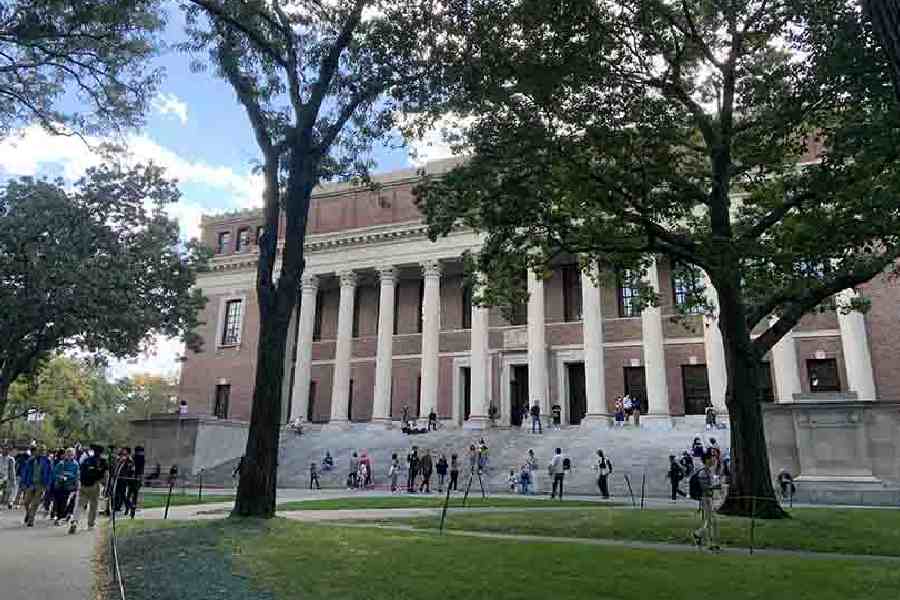Of the roughly 20 million books in Harvard University’s libraries, one has long exerted a unique dark fascination, not for its contents, but for the material it was reputedly bound in: human skin.
For years, the volume — a 19th-century French treatise on the human soul — was brought out for show and tell, and sometimes, according to library lore, used to haze new employees. In 2014, the university drew jokey news coverage around the world with the announcement that it had used new technology to confirm that the binding was in fact human skin.
But on Wednesday, after years of criticism and debate, the university announced that it had removed the binding and would be exploring options for “a final respectful disposition of these human remains”.
“After careful study, stakeholder engagement, and consideration, Harvard Library and the Harvard Museum Collections Returns Committee concluded that the human remains used in the book’s binding no longer belong in the Harvard Library collections, due to the ethically fraught nature of the book’s origins and subsequent history,” the university said in a statement.
Harvard also said that its own handling of the book, a copy of Arsène Houssaye’s Des Destinées de L’Ame, or “The Destiny of Souls”, had failed to live up to the “ethical standards” of care, and had sometimes used an inappropriately “sensationalistic, morbid and humorous tone” in publicising it. The library apologised, saying that it had “further objectified and compromised the dignity of the human being whose remains were used for its binding”.
The announcement came more than three years after the university announced a broad survey of the human remains across its collections, as part of the intensifying
reckoning with the role of slavery and colonialism in establishing universities and museums.
In a statement, Harvard’s president at the time, Lawrence S. Bacow, apologised for the university’s role in practices that “placed the academic enterprise above respect for the dead and human decency”.
A 2022 report identified more than 20,000 human remains in Harvard’s collections, ranging from full skeletons to locks of hair, bone fragments and teeth.
They included the remains of about 6,500 Native Americans as well as 19 people of African descent.
The survey also highlighted items whose origins lay outside the context of colonialism and slavery, including ancient funerary urns that may contain ashes or bone fragments and, at Houghton Library, the Houssaye book.
New York Times News Service











